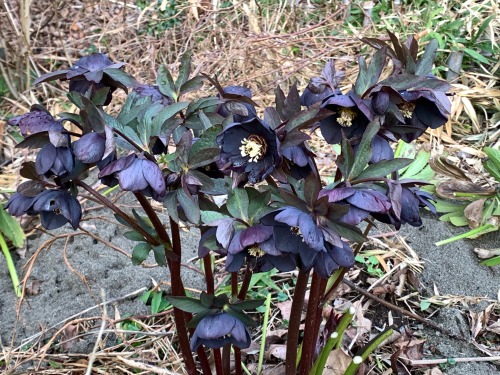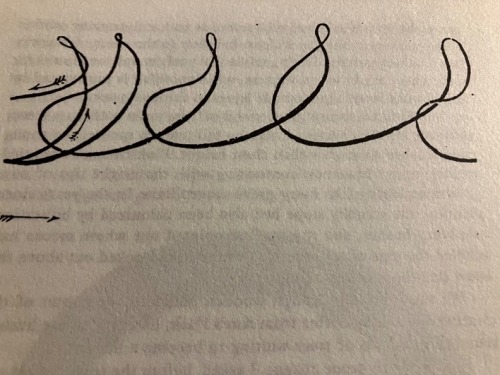My Morning Glory Doesn’t Like The Wind Chime

My morning glory doesn’t like the wind chime
More Posts from Calystegia and Others

I learned that the fruit of the [mesquite] tree was one of many in our landscape that had evolved to be eaten by the giant mammals who disappeared from this continent not long after humans showed up, one of those factual nuggets that punctuate a truth about the deep history of the Anthropocene in ways reading alone cannot. […] [W]e will soon need to learn not to take for granted things like the wild food that goes uneaten due to the absence of the animals whose extinction our dominion coincided with.
I wonder what kind of cake we will make, if we have to make it from the fruit of the old tree that grew up in the brownfield.
Christopher Brown, A Natural History of Vacant Lots: Field Notes from Urban Edgelands, Back Alleys, and Other Wild Places (2024)
“Pitcher Plant”
I dislike the term “pitcher plant”. It reeks of outdated ignorance and describes a vast number of species from around the world, many of which are not closely related to each other.
As a botanist, and an evil one at that, I prefer to be precise with my language. You too can become an educated scientist and terrific snob by using the correct terms for each variety of “pitcher plant”. If you require education on the matter, allow me to inform you.
There are three families of “pitcher plant”: Sarraceniaceae, Nepenthaceae, and Cephalotaceae. Sarraceniaceae has 3 genera — namely Sarracenia, Heliamphora, and Darlingtonia. Nepenthaceae has a single genus (Nepenthes), and Cephalotaceae has a single species. An entire family with only one species. Ugh.
Now, they look quite distinct from each other, so here are some photos and facts.

This species belongs to Sarracenia, the North American or trumpet pitcher plants. Note the height and slender shape.

This is also a Sarracenia. Note the lack of height and squat shape. Most Sarracenia species look like one of these two — they are quite easy to identify. They are found in boggy, temperate areas around North America and reach a height of up to 4 feet tall.

This is a stunning example of a Nepenthes (tropical pitcher plants) species. These are what you likely think of when someone mentions “pitcher plants”. Beautiful, found in warm, humid regions of the world. They are climbing vines and pitchers can reach over a foot tall (this is species-dependent).

This is an example of Heliamphora, the sun pitchers. They can be found in South America. While still belonging to the family Sarraceniaceae, they are not as tall as Sarracenia, but still quite graceful. If you have a mind for Greek, you may wonder if the “heli” in Heliamphora is for sun (from “helios”). It is not. The name Heliamphora instead comes from “helos”, meaning marsh. The name “sun pitcher” is misleading and comes from a misunderstanding — these plants would be more accurately called “marsh pitchers”.

I have a passionate love-hate relationship with Cephalotus follicularis. Cephalotus is a monotypic genus (a genus with only one species) and of course it is Australian. They look similar to Nepenthes but are unrelated and much smaller — the plants reach just shy of 8 inches tall.
There are also the cobra lilies, Darlingtonia, which belong to Sarraceniaceae. Those are arguably similar enough to Sarracenia that they do not need to be discussed here. Darlingtonia is another monotypic genus within Sarraceniaceae.
Now you have absolutely no excuse. You have been informed on the major genera of “pitcher plants” and should weaponize this knowledge as you see fit.
The brilliant and brave may also wish to weaponize the plants themselves. Kindly send me updates if you do. I am ever so curious…
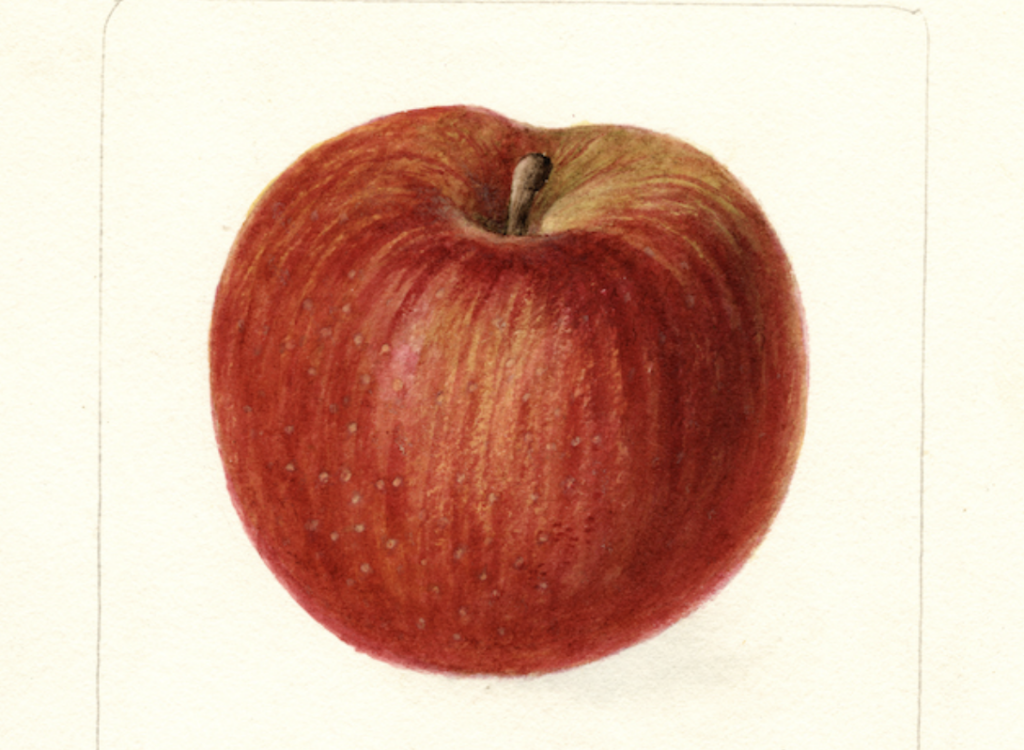
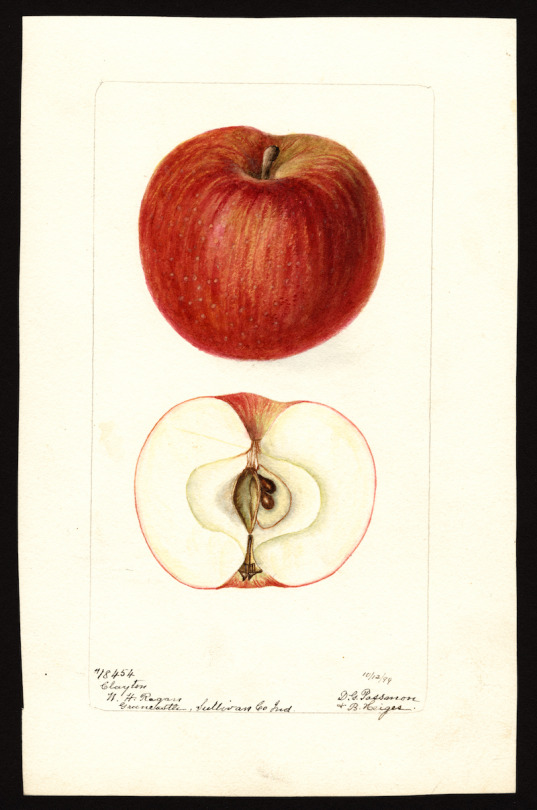
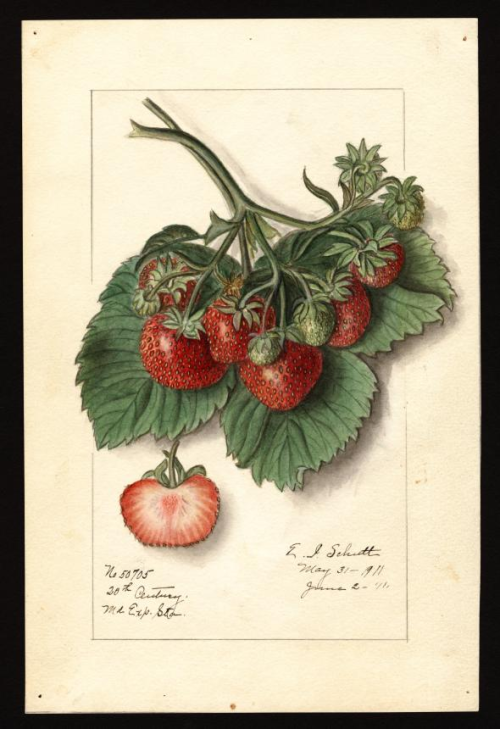
At what point does an exploration of these images tip from information into knowledge? It’s hard to say, but it’s unlikely we would pursue either one if that pursuit didn’t also include its share of pleasure. Enter the USDA’s Pomological Watercolor Collection here to [view] and download over 7,500 high-resolution digital images like those above.
I wonder how many of these fruits & vegetables have changed since 1886?
In an age that witnessed considerable support for social improvement, public schools often took center stage. By the 1830s, a chorus of reform-minded people began to sing the praises of free, tax-supported schools: Thaddeus Stevens, later a prominent Republican activist in Pennsylvania; Catharine Beecher, advocate of more educational opportunities for women; Caleb Mills, an evangelical minister who later became Indiana's leading common school advocate; and even notable Southerners, who faced the greatest opposition and whose efforts bore the least fruit. Enthusiasm for social improvement through education flourished. Since the turn of the century, countless pamphlets, speeches, reports, petitions, testimonials, newspaper editorials, books, and articles had promoted the importance of education in a republic. A few dozen educational periodicals also popularized the cause of learning by promoting a class-inclusive school system, especially for white children.
In Philadelphia, New York, and other cities, the editors of workingmen's newspaper - the voice of the skilled artisan minority - despaired over the fate of youth as apprenticeships declined and unskilled factory labor increased; they endorsed instituting a common system and eliminating the stigma attached to free schools. "I think that no such thing as charities should be instituted for the instruction of youth," wrote one articulate worker in the Mechanics' Free Press in Philadelphia in 1828. He favored free schools dependent not on "private charities" but "founded and supported by the government itself." One Ohioan added, "Unless the Common Schools can be made to educate the whole people, the poor as well as the rich, they are not worthy of the support of the patriot or the philanthropist." "Give to education... a clear field and fair play," said a recent immigrant in A Treatise on American Popular Education in 1839, "and your poor houses, lazarettos, and hospitals will stand empty, your prisons and penitentiaries will lack inmates, and the whole country will be filled with wise, industrious, and happy inhabitants. Immorality, vice and crime, disease, misery and poverty, will vanish from our regions, and morality, virtue and fidelity, with health, prosperity, and abundance, will make their permanent home among us.”
Born in an age when millennial ideals, such as universal peace and prosperity following Christ's imminent return to earth, influenced wide sectors of the population, the common schools became a useful barometer of the extensive social changes that transformed the nation before the Civil War. Cities, factories, and foreign immigration generated moral panic and social fears among many northern reformers, whose search for solutions to public ills centered on a more expansive public school system. Reflecting the contradictory passions of the reformers, schools not only favored greater access to literacy and academic study but simultaneously downplayed intellectual achievement by elevating the moral aims of instruction. America's ambivalent attitude toward the life of the mind and scholarship thus found expression in the nation's emerging school system, where character development and moral uplift took precedence even as lifeless instruction in academic subjects predominated. Setting a pattern that long endured, reform-minded citizens increasingly assumed that individual welfare and social progress depended on an extensive network of public schools.
william j. reese, america's public schools from the common school to "no child left behind"
Some of you may have heard about Monarch butterflies being added to the Threatened species list in the US and be planning to immediately rush out in spring and buy all the milkweed you can manage to do your part and help the species.
And that's fantastic!! Starting a pollinator garden and/or encouraging people and businesses around you to do the same is an excellent way to help not just Monarchs but many other threatened and at-risk pollinator species!
However.
Please please PLEASE do not obtain Tropical Milkweed for this purpose!
Tropical milkweed (Asclepias curassavica)--also commonly known as bloodflower, Mexican butterflyweed, and scarlet milkweed--will likely be the first species of milkweed you find for sale at most nurseries. It'll be fairly cheap, too, and it grows and propagates so easily you'll just want to grab it! But do not do that!
Tropical milkweed can cause a host of issues that can ultimately harm the butterflies you're trying to help, such as--
Harboring a protozoan parasite called OE (which has been linked to lower migration success, reductions in body mass, lifespan, mating success, and flight ability) for long periods of time
Remaining alive for longer periods, encouraging breeding during migration time/overwintering time as well as keeping monarchs in an area until a hard freeze wherein which they die
Actually becoming toxic to monarch caterpillars when exposed to warmer temperatures associated with climate change
However--do not be discouraged!! There are over 100 species of milkweed native to the United States, and plenty of resources on which are native to your state specifically! From there, you can find the nurseries dedicated to selling native milkweeds, or buy/trade for/collect seeds to grow them yourself!!
The world of native milkweeds is vast and enchanting, and I'm sure you'll soon find a favorite species native to your area that suits your growing space! There's tons of amazing options--whether you choose the beautiful pink vanilla-smelling swamp milkweed, the sophisticated redring milkweed, the elusive purple milkweed, the alluring green antelopehorn milkweed, or the charming heartleaf milkweed, or even something I didn't list!
And there's tons of resources and lots of people willing to help you on your native milkweed journey! Like me! Feel free to shoot me an ask if you have any questions!
Just. PLEASE. Leave the tropical milkweed alone. Stay away.
TLDR: Start a pollinator garden to help the monarchs! Just don't plant tropical milkweed. There's hundreds of other milkweeds to grow instead!
-
 charonsdanake reblogged this · 3 days ago
charonsdanake reblogged this · 3 days ago -
 levaminos reblogged this · 3 days ago
levaminos reblogged this · 3 days ago -
 toulouie liked this · 3 days ago
toulouie liked this · 3 days ago -
 wingittoodles reblogged this · 4 days ago
wingittoodles reblogged this · 4 days ago -
 imback555 liked this · 4 days ago
imback555 liked this · 4 days ago -
 snusmumriken113 reblogged this · 4 days ago
snusmumriken113 reblogged this · 4 days ago -
 vanillaflavoredsky reblogged this · 4 days ago
vanillaflavoredsky reblogged this · 4 days ago -
 octopustronaut reblogged this · 4 days ago
octopustronaut reblogged this · 4 days ago -
 koiihpon liked this · 4 days ago
koiihpon liked this · 4 days ago -
 runawaytrainofwhat reblogged this · 4 days ago
runawaytrainofwhat reblogged this · 4 days ago -
 hi-hello8d liked this · 5 days ago
hi-hello8d liked this · 5 days ago -
 unknowncomp reblogged this · 5 days ago
unknowncomp reblogged this · 5 days ago -
 becausevinegar reblogged this · 5 days ago
becausevinegar reblogged this · 5 days ago -
 maddie-2022 reblogged this · 5 days ago
maddie-2022 reblogged this · 5 days ago -
 maddie-2022 liked this · 5 days ago
maddie-2022 liked this · 5 days ago -
 emenerd reblogged this · 5 days ago
emenerd reblogged this · 5 days ago -
 ask-me-about-my-thumbs reblogged this · 5 days ago
ask-me-about-my-thumbs reblogged this · 5 days ago -
 acaciaroots reblogged this · 5 days ago
acaciaroots reblogged this · 5 days ago -
 cunhampaye liked this · 5 days ago
cunhampaye liked this · 5 days ago -
 fabianocolucci reblogged this · 5 days ago
fabianocolucci reblogged this · 5 days ago -
 kragelfjagel liked this · 5 days ago
kragelfjagel liked this · 5 days ago -
 eonthewingedwolf reblogged this · 5 days ago
eonthewingedwolf reblogged this · 5 days ago -
 roze-realm liked this · 5 days ago
roze-realm liked this · 5 days ago -
 superpika1of4 reblogged this · 5 days ago
superpika1of4 reblogged this · 5 days ago -
 superpika1of4 liked this · 5 days ago
superpika1of4 liked this · 5 days ago -
 salgadapedra reblogged this · 5 days ago
salgadapedra reblogged this · 5 days ago -
 salgadapedra liked this · 5 days ago
salgadapedra liked this · 5 days ago -
 anilover10 reblogged this · 5 days ago
anilover10 reblogged this · 5 days ago -
 rr13yami liked this · 5 days ago
rr13yami liked this · 5 days ago -
 mimi17lps liked this · 5 days ago
mimi17lps liked this · 5 days ago -
 kinglyinferno reblogged this · 5 days ago
kinglyinferno reblogged this · 5 days ago -
 c-van-hobbes reblogged this · 5 days ago
c-van-hobbes reblogged this · 5 days ago -
 c-van-hobbes liked this · 5 days ago
c-van-hobbes liked this · 5 days ago -
 sexingmytrans liked this · 5 days ago
sexingmytrans liked this · 5 days ago -
 matt-the-second-coming reblogged this · 5 days ago
matt-the-second-coming reblogged this · 5 days ago -
 seaurchin1 liked this · 6 days ago
seaurchin1 liked this · 6 days ago -
 anicream liked this · 6 days ago
anicream liked this · 6 days ago -
 hecticautismguy reblogged this · 6 days ago
hecticautismguy reblogged this · 6 days ago -
 captainautismo reblogged this · 6 days ago
captainautismo reblogged this · 6 days ago -
 gundilias reblogged this · 6 days ago
gundilias reblogged this · 6 days ago -
 flexmcflipster reblogged this · 6 days ago
flexmcflipster reblogged this · 6 days ago -
 tomboyfromhell reblogged this · 6 days ago
tomboyfromhell reblogged this · 6 days ago -
 lurdlord reblogged this · 6 days ago
lurdlord reblogged this · 6 days ago -
 lurdlord liked this · 6 days ago
lurdlord liked this · 6 days ago -
 tomboyfromhell liked this · 6 days ago
tomboyfromhell liked this · 6 days ago -
 ifartconfetti reblogged this · 6 days ago
ifartconfetti reblogged this · 6 days ago -
 leporinesaber reblogged this · 6 days ago
leporinesaber reblogged this · 6 days ago -
 beware-the-werenerd reblogged this · 6 days ago
beware-the-werenerd reblogged this · 6 days ago -
 hissing-cats reblogged this · 6 days ago
hissing-cats reblogged this · 6 days ago -
 hissing-cats liked this · 6 days ago
hissing-cats liked this · 6 days ago

icon: Cressida Campbell"I know the human being and fish can co-exist peacefully."
35 posts
